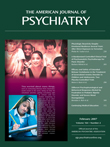Clinical Manual of Impulse-Control Disorders, edited by Hollander and Stein, is not at all the book the title implies. First, the text is about far more than the formally designated “impulse control disorders,” including four disorders that may join this category in DSM-V: impulsive-compulsive sexual disorders (sexual compulsions), impulsive-compulsive self-injurious disorders (self-injurious behaviors), impulsive-compulsive Internet usage disorder (problematic Internet use), and impulsive-compulsive buying disorder (compulsive shopping); in addition to binge eating, intermittent explosive disorder, and childhood conduct disorder and the antisocial spectrum. The book is really about disorders or phenomenon in which impulsivity plays a crucial role—a topic more interesting than just the DSM-IV classified disorders of impulse control.
Second, the book is not a “clinical manual.” While technically a manual, i.e., a handbook that is a concise reference, anyone seeking a manual in the sense of a training manual will be disappointed. The book has a wealth of information, much of which is far beyond clinical information.
The editors misstate the significance of the impulse control disorders in the first sentence of the preface: “The impulse-control disorders (ICDs) have burst onto the scene in psychiatry” (p. XV ). In fact, impulse control disorders were central to one of the major debates in 19th-century psychiatry. Isaac Ray, the father of American forensic psychiatry, opined in 1838, “Amind the rapid and tumultuous succession of feelings that rush into his mind, the reflective powers are paralyzed, and his movements are solely the result of a blind automatic impulse with which reason has as little to do …” (1). John Gray, the third Editor-in-Chief of The American Journal of Psychiatry, wrote in 1858, “[V]iolence against the person and against property is now so prevalent, that we should be more than commonly cautious of recognizing any doubtful form of insanity” (2). Debates on the subject of impulse disorders filled the professional journals. In this same journal, Charles Pilgrim, a New York State asylum superintendent and commissioner of mental health, asserted in 1885 that “[t]here is no such psychological entity as pyromania” (3). The debate did not entirely disappear in the early 20th century, with Kraeplin including impulse disorders in his taxonomy while other psychiatrists disagreed.
Clinical Manual of Impulse-Control Disorders is an uneven book. While it’s generally the case that authors do not read each other’s contributions, the editors need to ensure a unified presentation. Chapters generally follow a sequence, but then some jarringly vary for no apparent reason. The chapters are presented in no comprehensible order when there were several logical sequences available. Two chapters present exactly the same figure on pathological gambling. A table captioned “DSM-IV-TR impulse control disorders” includes many more disorders than these. Some chapters include excellent discussions of psychosocial variables in the pathogenesis of a disorder while others fail to consider these variables at all.
I suggest reading the first chapter, “Conceptualizing and Assessing Impulse-Control Disorders” and then the last chapter, “Treatment of Impulse-Control Disorders.” Then sample from the rest, depending on your interests. But caution, quality varies greatly. Donovan’s chapter on childhood conduct disorder is the only one to provide clinical vignettes. Grant’s chapter on kleptomania is quite good; Lejoyeux and colleague’s chapter on pyromania is outdated, misleading, and is especially poor in its discussion of treatment.
Clinical Manual of Impulse-Control Disorders is a good place to start one’s journey to understanding the quagmires presented by impulses with negative outcomes. I did wish that the editors, in their chapters, would have discussed the matter of pathologizing all sorts of human behavior under the penumbra of disorders of impulse control. Since the editors saw fit to include impulsive-compulsive Internet usage disorder, why was obsessive coupon disorder not included, for example (4)?

